I recently purchased two of these Streamlight Siege AA lanterns because my old AA-powered lanterns were a tad outdated by about a decade, lol. That, and even though I like the D-cell LED Lanterns I purchased for emergency purposes very much, especially for the price, I have plenty more AA batteries on hand as well as the ability to recharge AA-cell batteries for years to come.
Now, at first glance, the Streamlight lanterns I received were a tad smaller than I’d expected, being roughly the size of two decks of cards:
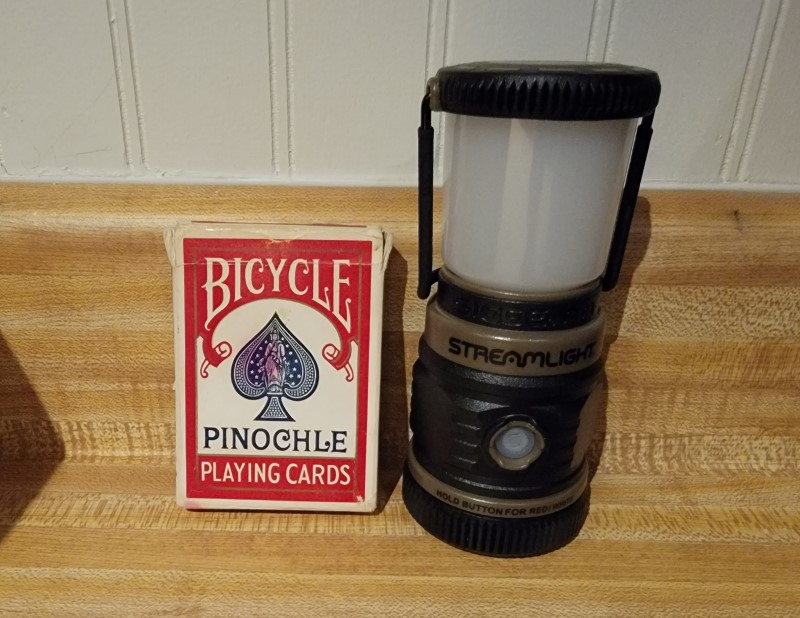
Here’s what the Streamlight looks like when compared to the D-cell LED lantern I was talking about above, which itself is quite compact:
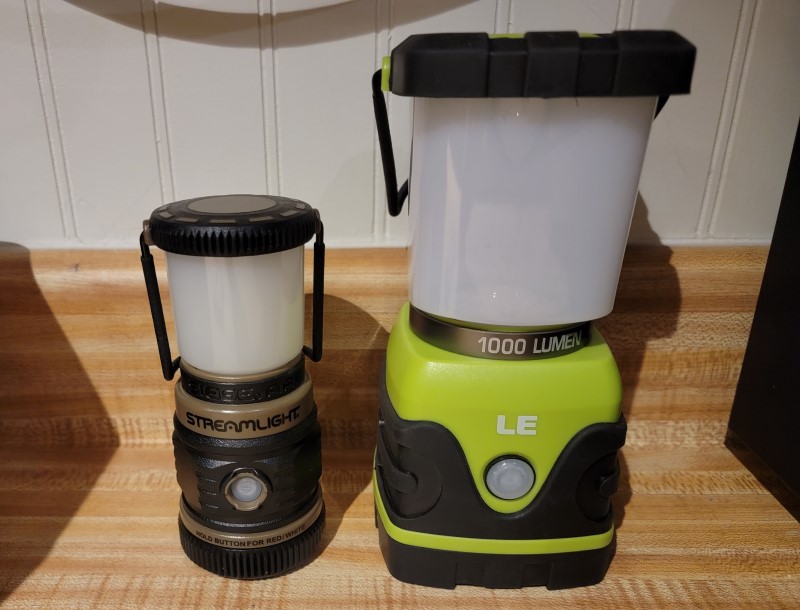
On the bottom of the Streamlight, there’s a handy carabiner-style hanger, which folds away for easy storage; it should work well enough for most applications. In the photo below, I attached it to a microwave cord, around which the carabiner doesn’t entirely clamp onto, though it’s hard to see in the photo:
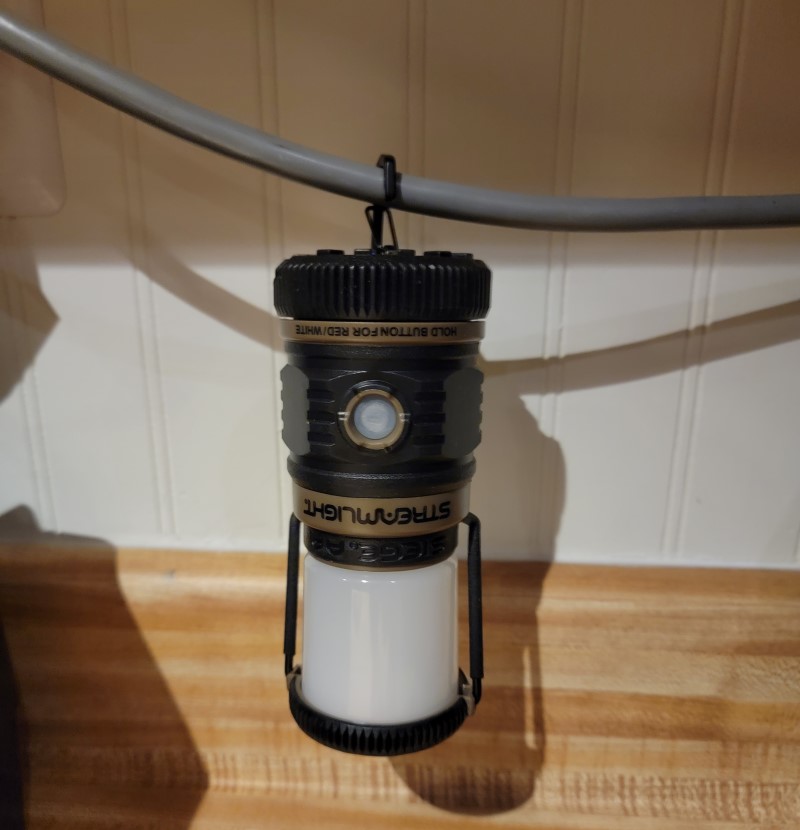
Although not shown in use, there’s also a carry handle which, they say, allows the lantern to hang from a railing, and I can see how that would be the case; however, I had a hard time finding any railings or anything similar from which to hang it around my house. In any case, the handle also folds down and locks into place, a nice feature to keep it from flopping around.
On another positive note, the lanterns floats in water and is waterproof down to roughly six feet. Here it is floating in a pitcher of water:

I had no problems with the Streamlight working after a few minutes of allowing it to float in the pitcher. I don’t know how long it can stay in water without springing a leak, and I don’t expect to use it for anything other than around the house or camping.
Interestingly, the top unscrews to expose the inner lantern bulb. At first, I’d wondered why you would ever want to take the top cover off, but as you’ll see in a moment it could be useful:
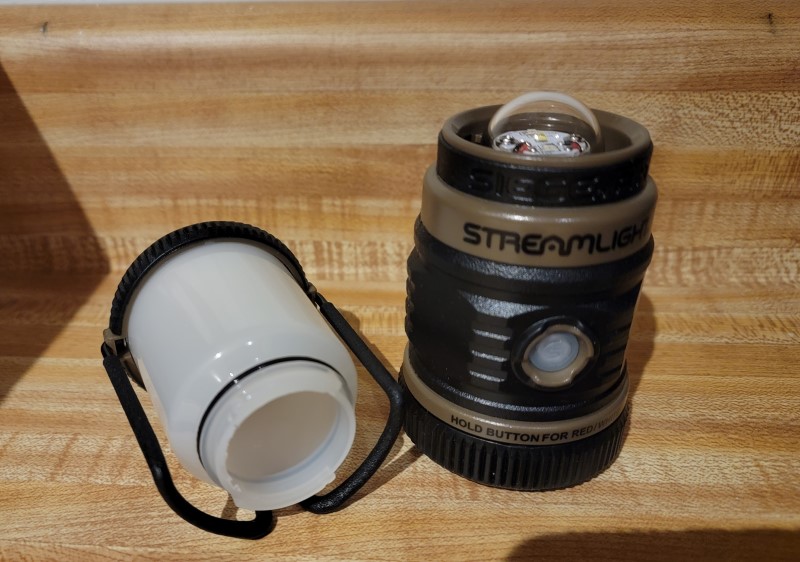
FYI, the bulb appears to be plastic by tapping on it, which makes me suspect it’s fairly durable, but I wouldn’t want to drop the lantern directly on the bulb to find out.
Obviously, the question is: how well does the lantern work to light up a space? To test it, I chose the darkest room in the house, which happens to be the basement kitchenette that my mother-in-law has turned into her local sports fanatic wall. Here’s what it looks like on the lowest setting (50 lumens):
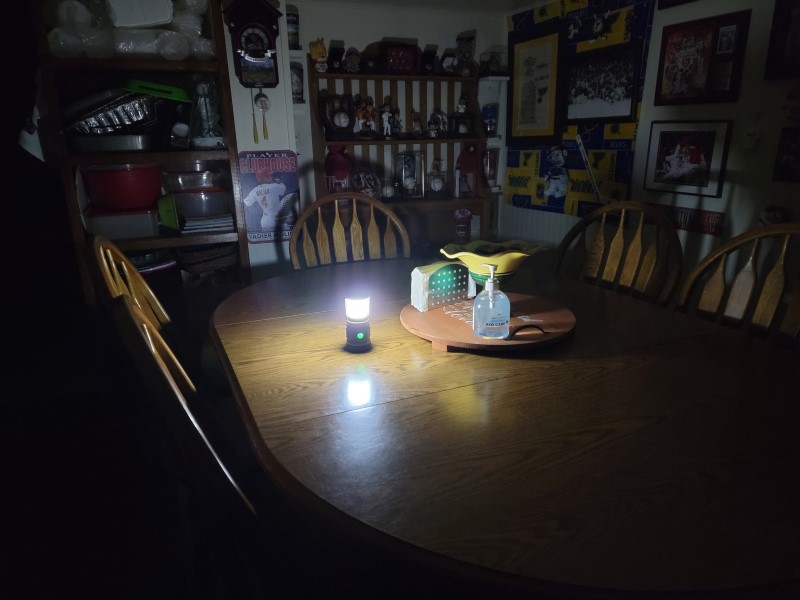
Truth be told, the Streamlight puts off a fair amount of light on low in a pitch-black room. It’s enough to read by and certainly enough to keep from stubbing your toes. Even better, it’s expected to run approximately 37 hours on the low setting. I’ll skip the medium setting as there’s very little difference, in my opinion. Here’s what it looks like on high (200 lumens):
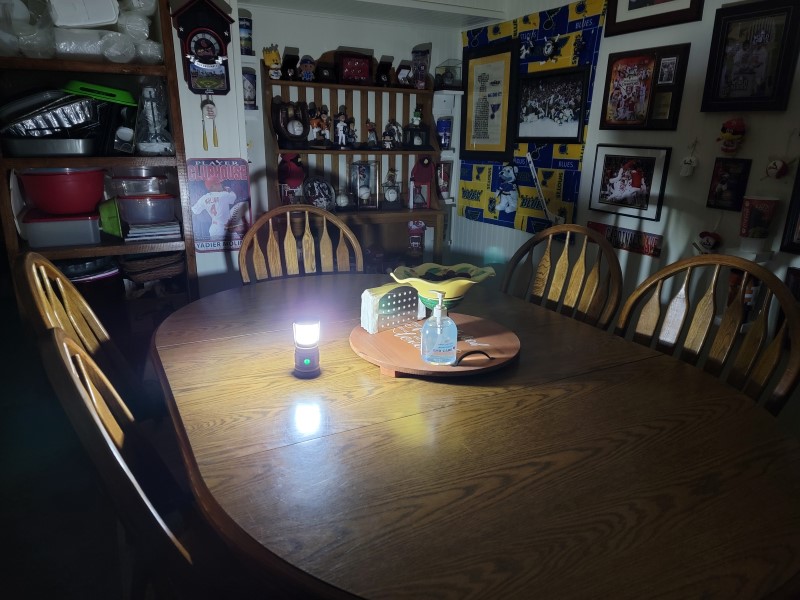
As you can probably tell, there’s a bit more light in the room, but nothing to get super excited about, particularly when the batteries are only expected to last about 7 hours on high, roughly one-fifth the time on low!
Remember when I mentioned the top unscrews exposing the bulb? Here’s what the room looks like with the top off and on high:
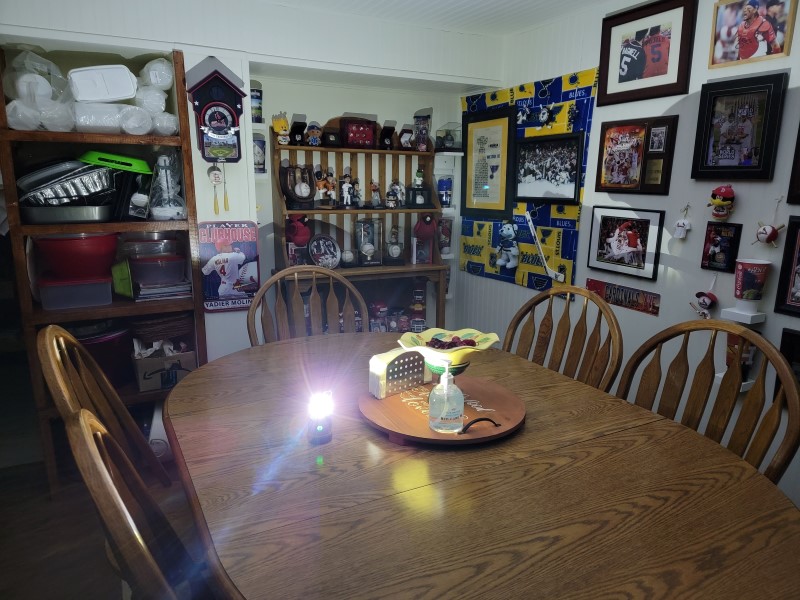
Quite a difference, right? I think so. As long as you’re not staring directly at the bulb, the little Streamlight is rather more effective with the top off.
I’d also wondered how it might work as a flashlight. So, with the top off, I picked up the lantern and shone it toward the corner:
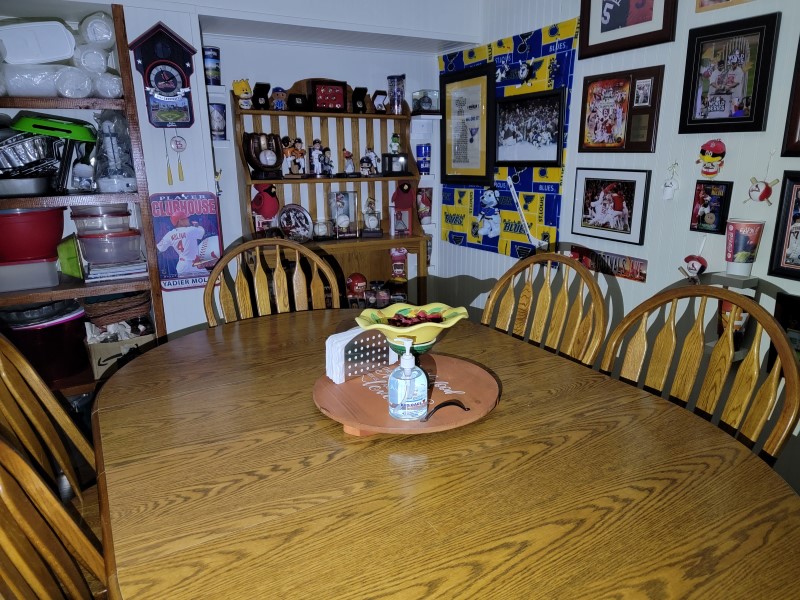
Not bad if you ask me. 🙂
The Streamlight also has a red light mode intended to preserve night vision, a nice touch:
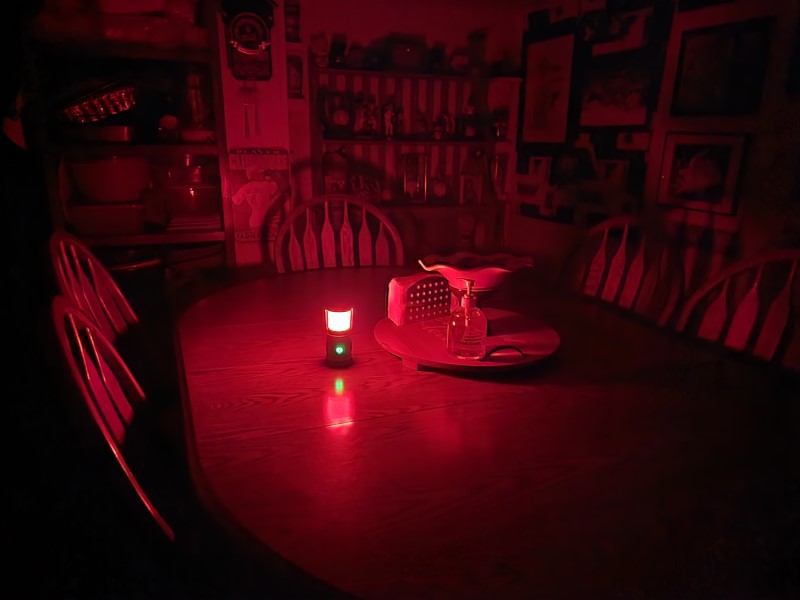
Aside from being capable of running a staggering 192 hours (8 days) like this, the red light would probably get annoying after a short while. And, as much as it pains me to say it, the lantern also has an SOS/blinking mode should you find the need. Personally, I think the SOS mode built into LED lanterns and flashlights it completely useless.
Now, what about a comparison? Here’s the D-cell lantern in the same room on high:
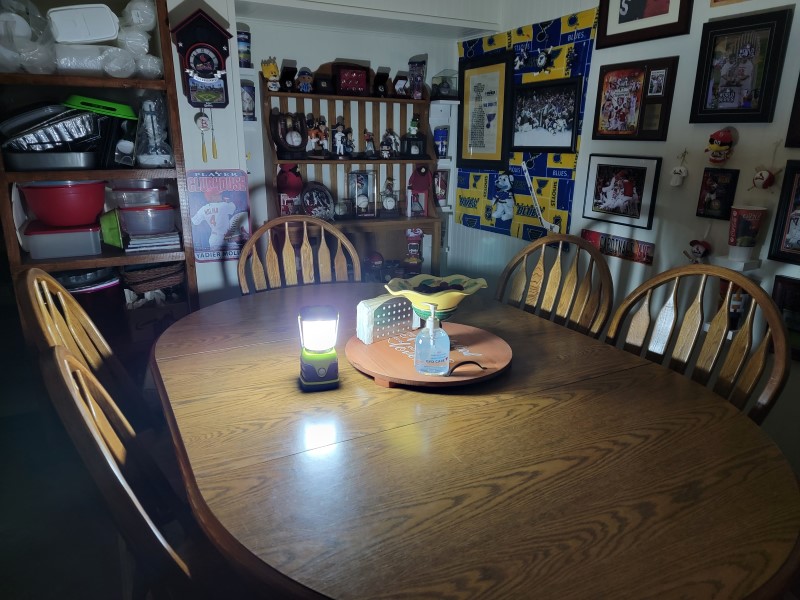
I’d argue that the Streamlight Siege on high, and with the cover off, is as bright as the D-cell lantern, which bumps the Streamlight up another notch. The only drawback, however, is that a single Streamlight (as of the time of this writing) runs around $27 whereas the D-cell runs just under $20 ($36 for a pair).
In my opinion, both LED lanterns are a good choice for emergency preparedness purposes, though the Streamlight Siege is more compact, slightly more versatile (e.g., multiple hangers), runs longer on a set of batteries, and is likely more useful because it runs on AA batteries.
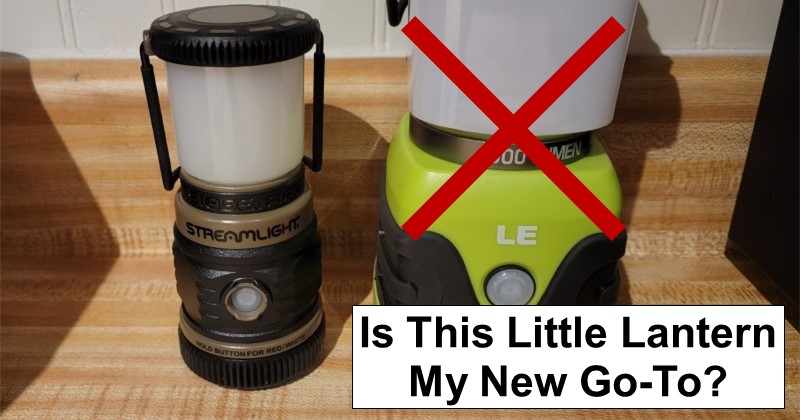
Leave a Reply